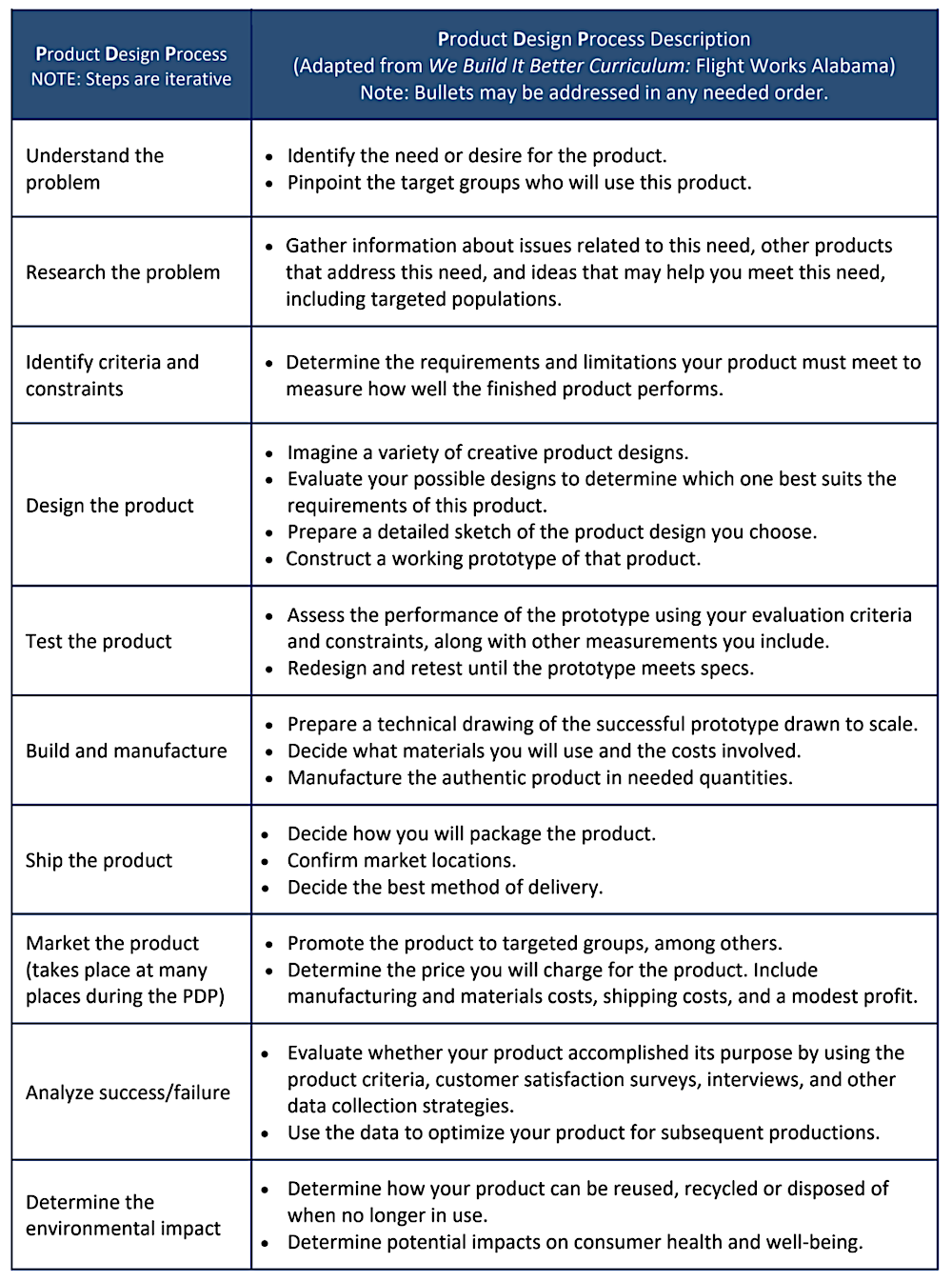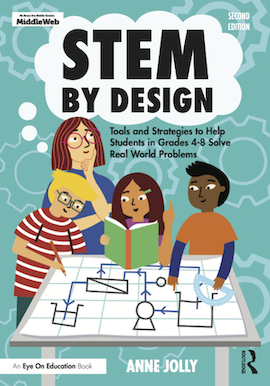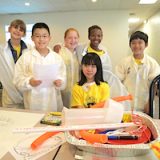Take Your STEM Projects to Another Level: Product Design
Imagine you conduct a STEM project – and the solution for your STEM challenge winds up going beyond just a prototype. What if this prototype can become a product that kids make for actual use – even in a limited way? (With 3-D printers increasingly available, that’s a real possibility!)
The Product Design Process gives students a way to think about taking their project solutions further. They can expand their thinking to include things like scaling up designs, manufacturing products, working with customers, marketing practices, distribution, environmental impacts, and so on. This sample PDP I designed will give you the big ideas. (If you want to try it with students, click the link to download it.)
Responding to real-world issues with doable products
You may be scratching your head at this suggestion since most STEM challenges focus on developing solutions for community or global issues, especially health and environmental problems. But if you think about it, some challenges do lead to a simple “product prototype” as a solution.
For example, maybe your kids have designed effective face masks to help prevent transmission of infectious diseases (see one idea here). The PDP steps provide an opportunity for them to develop a design more fully. Working through the steps of carrying an effective face mask from a prototype to a product can add a layer of mind-stretching information, skills, and vocabulary to their toolkits.
Suggest your students think of someone with a need they’d like to solve. Perhaps they know a person with arthritis who likes to sew but finds it painful to firmly hold a ruler in place and measure seams, hems, and fabrics. Your students might brainstorm and design an ergonomic hand grip this person could attach to the ruler he/she uses.
STEM teams could develop their designs and test prototypes. When they settle on a best design, they could start transforming that prototype into the real thing, using the PDP steps as a guideline. (A 3-D printer could easily “manufacture” a product like this.)
Ideas are certainly out there for this kind of STEM project expansion. Browsing some vetted STEM websites like Design Squad Global can yield product-worthy possibilities. My otherwise generous editor can be parsimonious with my word count, so I’m not going to delve into websites and lessons here, but you can find suggestions embedded in many of my MiddleWeb posts.
What’s not to like about this idea? And, did I mention that taking a STEM project through the product development phase begs for cross-curricular involvement? In fact, other subject areas and teachers become a necessary part of project success. Now, that’s a genuine school-wide STEM project!
Source: MiddleWeb STEM by Design blog post, “Product Design Can Enrich STEM Projects” (4/26/21).












